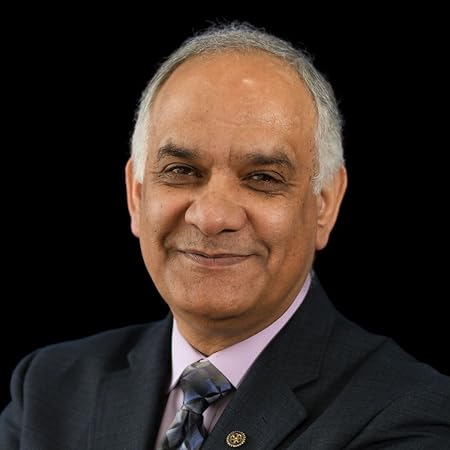If you’re at least 73 years old and have funds in a 401(k) or similar tax-deferred account, the initials “RMD” should be part of your retirement planning. They stand for “required minimum distribution,” which reflects a basic reality: after allowing you save and earn tax free for the past several decades, Uncle Sam is ready to start receiving his share. That deferred tax bill is coming due.
But the focus of this recent article from Kiplinger isn’t really about how to plan for those RMDs – there are plenty of places to get that advice. Instead, reporter Maurie Backman is asking a fundamental question: what do you do when the IRS insists you withdraw more from your retirement accounts than you feel is prudent?
At issue in Backman’s article is what’s commonly called the 4 percent rule. It’s a simple – some might say “simplistic” – rule of thumb that basically says withdrawing no more than 4 percent of an investment account annually should allow that account to stay viable over the long haul. But as we’ll see, RMD rules demand ever-higher withdrawal rates, quickly exceeding the 4 percent threshold.
What’s a saver to do? Backman offers some advice. Let’s take a look.
Making Money Last: Will RMDs Upend Your Retirement Planning?
Backman’s warning sounds amusing at first. Required minimum distributions, or RMDs, might just “rain on your retirement parade” unless you take steps to manage withdrawal requirements.
She says it this way. “Will RMDs ruin the 4 percent rule for you in retirement? It’s quite possible if you have a good chunk of your retirement savings in traditional accounts.” Backman argues that saving over the years has been conceptually easy: set aside money each month in your tax-deferred IRA or 401(k) and wait for it to compound.
But now, in retirement, there’s a new reality: the IRS wants you to start pulling money out of those accounts and paying taxes on withdrawals. “It’s managing your savings in retirement that’s the tricky part,” Backman writes.
For Many, the 4 Percent Rule Assures a Healthy Nest Egg
The biggest worry for most retirees, and the reason managing savings can be stressful, says the Kiplinger article, comes down to four words: fear of going broke.
“Once you’ve accumulated wealth,” Backman writes, “you don’t want to risk having your nest egg dry up. A recent Allianz survey found that 64 percent of respondents worry more about running out of money than actually dying, which speaks to the importance of withdrawing from your savings carefully.”
She adds, “To that end, there’s some guidance in the form of the 4 percent rule.”
Financial Planners Endorse the 4 Percent Rule, with Caveats
The 4 percent rule may not be precise, but it has the advantage of simplicity.
“The 4 percent rule goes as follows,” Backman explains: “Withdraw 4 percent of your savings in your first year of retirement. Repeat that 4 percent withdrawal in future years while making adjustments for annual inflation. Do this consistently, and your savings are likely to last 30 years.”
She’s quick to add that not everyone agrees with the 4 percent rule. In 2024, she writes, “Morningstar recommended a 3.7 percent withdrawal rate for retirees due to stock market valuations and bond yields at the time.” However, the year before in the face of slightly more favorable bond yields, Morningstar stuck with 4 percent. Even today, “many financial professionals think 4 percent is a safe withdrawal rate, for the most part.”
What Happens When RMD Withdrawal Rates Top 4 Percent?
For the sake of argument, let’s say you’ve chosen to stick with the 4 percent rule for your retirement. How can RMD rules get in your way?
“The IRS offers traditional IRA and 401(k) savers some pretty great perks,” Backman observes — “tax-free contributions and tax-deferred growth. In exchange, the IRS wants IRAs and 401(k)s to be used for their intended purpose, and not as a loophole for wealthy people to pass money on to future generations in a tax-advantaged manner.”
That’s why savers born between 1951 and 1959 have to start withdrawing from these accounts starting at age 73. (For those born in 1960 or later, RMDs start at 75.)
To calculate RMDs, the IRS uses the fair market value of tax-deferred retirement accounts combined with your age. Generally speaking, the older you are, the higher the RMD rate. This will quickly blow the 4 percent rule out of the water.
RMD Withdrawal Rates will Quickly Exceed 4 Percent
Backman’s point made us wonder how fast the RMD withdrawal requirements will top the magic 4 percent threshold, so we did a little sleuthing to find out. As our guide, we used this RMD table provided by BankRate. (Make sure you get accurate advice on this issue from a qualified financial planner – our calculations are for illustration purposes only.)
The RMD table is simple: next to your age, you’ll see a number labeled “Distribution Period” that is related to life expectancy. Divide your year-end fund balance in those accounts that are subject to RMD rules by the Distribution Period that corresponds to your age and you’ll see your required withdrawal amount. This can be easily converted to a rough percentage.
Using figures required by the IRS, our quick number-crunching shows the 2024-2025 RMD withdrawal rate at age 73 equals about 3.8 percent. (Remember, these percentages are provided for illustration only.) But at age 80, that figure rises to just below 5 percent, hits 6.25 percent by age 85, and tops 8 percent by age 90.
Clearly, retirees committed to preserving savings by adhering to the 4 percent rule are going to find themselves in conflict with Uncle Sam.
Three Suggestions to Work Around RMD Withdrawal Rates
If you’re laser-focused on adhering to a 4 percent withdrawal rate, says Backman, there are workarounds. She offers three specific suggestions in her Kiplinger article.
Our advice, of course, is that this all needs to be part of a much larger conversation, including the development of a financial dashboard in partnership with a qualified, objective financial planner. That said, Backman’s ideas sound like common sense, at least on the surface.
RMD Suggestion #1: Don’t Spend Withdrawals – Reinvest Instead
Backman spoke with Drew Boyer of Boyer Financial Group. He offered a simple solution: if the IRS requires an RMD greater than 4 percent, don’t spend it: reinvest it.
“If your RMD is higher than 4 percent, it’s the IRS’s distribution calculator you must follow. But your spending patterns don’t need to change,” Boyer told Kiplinger. “If you are forced to take out 6 percent, you don’t need to spend 6 percent. You can still spend 4 percent but reinvest the excess amount.”
Boyer suggests that just about any non-tax-advantaged account is fair game, depending on your risk tolerance and available what interest rates. As Backman writes, “there’s no rule stating you have to invest RMD funds you don’t want or need to spend. You can put the money into a savings account or CD if there’s no specific investment that aligns with your goals. Either way, you’re preserving the cash rather than spending it.”
RMD Suggestion #2: Avoid RMDs Through Roth Conversions.
Another option, says Backman, is to eliminate RMDs entirely by converting traditional accounts to Roth accounts.
James Hutchens of Northern Trust, explains this option. “Big RMDs can be planned for,” he told Backman. “A Roth conversion is a potential workaround if your planning horizon is long enough and you use other assets to pay the income tax bill associated with the conversion. This reduces the amount that is subject to RMDs.”
There are major caveats, however. A Roth conversion will boost taxable income in the year you make one. That extra income in a given year could in turn trigger Medicare surcharges known as income-related monthly adjustment amounts (IRMAA) two years down the road, potentially hiking Part B premiums significantly.
That’s why “a conversion should be considered after careful consideration of income flows, goals, and your planning horizon,” Hutchens told Kiplinger.
RMD Suggestion #3: Handle a Large RMD with a QCD
In the battle of the tax acronyms, one way to divert the impact of a large RMD is with a QCD – a qualified charitable distribution. As Backman states, a QCD won’t help you lower your withdrawal rate, but it could help you avoid a big tax bill.
With a QCD, a donation to a qualifying not-for-profit goes directly from your IRA or other similar account to the charity without being paid out to you first. The gift doesn’t count as a charitable tax deduction, but it also doesn’t count as income for tax purposes.
“It satisfies your mandatory RMD and helps pay it forward for those in need,” says financial planner Boyer. “That’s a win-win move that’s tax-smart.”
Rajiv Nagaich – Your Retirement Planning Coach and Guide
The long-awaited book by Rajiv Nagaich, called Your Retirement: Dream or Disaster, has been released and is now available to the public. Retirement: Dream or Disaster joins Rajiv’s ground-breaking DVD series and workbook, Master Your Future, as a powerful planning tool in your retirement toolbox. As a friend of AgingOptions, we know you’ll want to get your copy and spread the word.
You’ve heard Rajiv say it repeatedly: 70 percent of retirement plans will fail. If you know someone whose retirement turned into a nightmare when they were forced into a nursing home, went broke paying for care, or became a burden to their families – and you want to make sure it doesn’t happen to you – then this book is must-read.
Through stories, examples, and personal insights, Rajiv takes us along on his journey of expanding awareness about a problem that few are willing to talk about, yet it’s one that results in millions of Americans sleepwalking their way into their worst nightmares about aging. Rajiv lays bare the shortcomings of traditional retirement planning advice, exposes the biases many professionals have about what is best for older adults, and much more.
Rajiv then offers a solution: LifePlanning, his groundbreaking approach to retirement planning. Rajiv explains the essential planning steps and, most importantly, how to develop the framework for these elements to work in concert toward your most deeply held retirement goals.
Your retirement can be the exciting and fulfilling life you’ve always wanted it to be. Start by reading and sharing Rajiv’s important message. And remember, Age On, everyone!
(originally reported at www.kiplinger.com)


